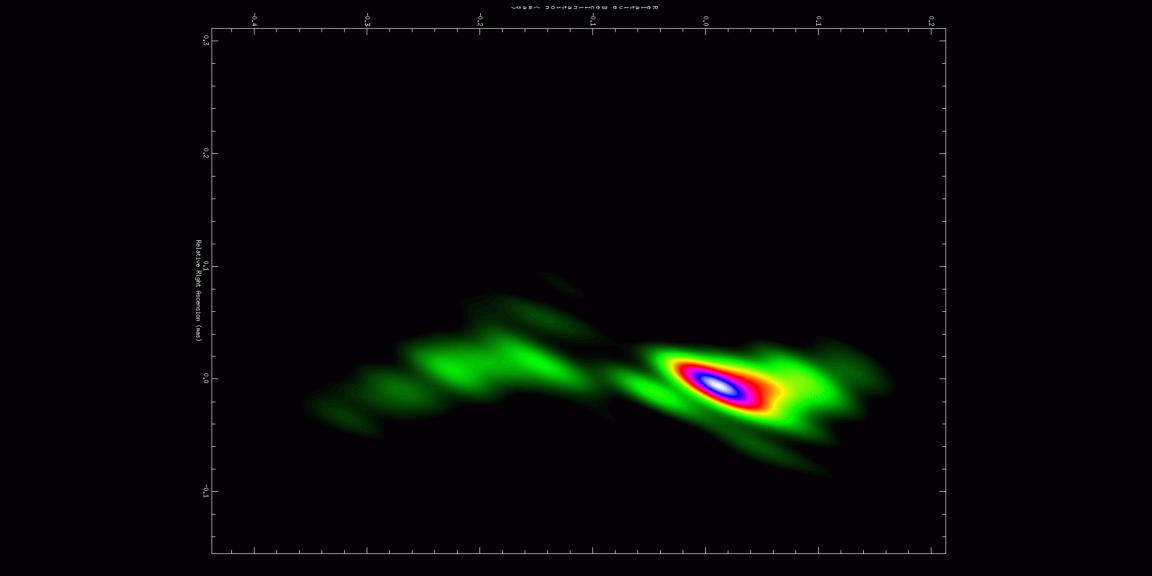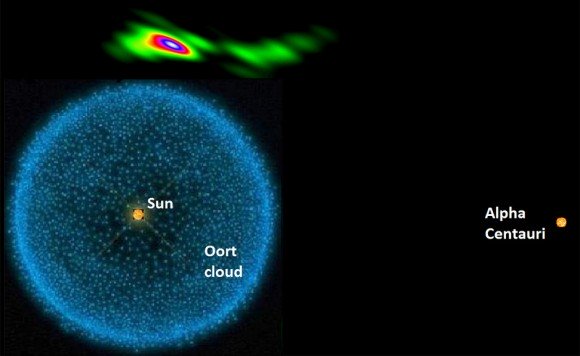
ZOOMING INTO SPACE
While astronomers regularly observe space with telescopes and observatories located on Earth, taking higher resolution photos require the use of space telescopes. this technology allows us to obtain images that truly reveal what our cosmos looks like, circumventing the gas and dust particles that cloud our atmosphere.
Recently, scientists took the highest-resolution image taken in astronomy. And while it may only look like a neon blob, it actually represents a jet of material coming out of a black hole that is a staggering 900 million light-years away from Earth.
While the telescope may be huge in power, its subject matter isn’t any less striking. The jet of material is much more vast with, astronomers estimating that it would just barely fit inside the Oort cloud…which surrounds our solar system or a distance of roughly 300 billion kilometers (and that’s at its minimum).
This technical feat is equivalent to capturing an image of a half-dollar coin on the surface of the Moon from the confines of Earth.
The image and the resulting analysis were published this week in The Astrophysical Journal.
“CAPTURING” A BLACK HOLE

The image was captured at a wavelength of 22GHz and required a projected baseline distance )the effective field over which the data is obtained) of eight times the diameter of Earth or around 62,000 miles.
By taking advantage of that distance, the researchers were able to develop the high-resolution image with an angular resolution (the distance between parts of an image that allows for distinguishing small details) of 21 micro arc seconds. That means that every point on the image is only differentiated to the point directly next to it by 0.000000006 degrees.
The black hole is centered at the BL Lacertae galaxy, and the jet it produces is notable for its spiraling magnetic field shooting particles outwards much faster than expected. Part of the discrepancy is from the coiled acceleration, but researchers hope that future observations would help shed light on how the jets produce microwave radiation.